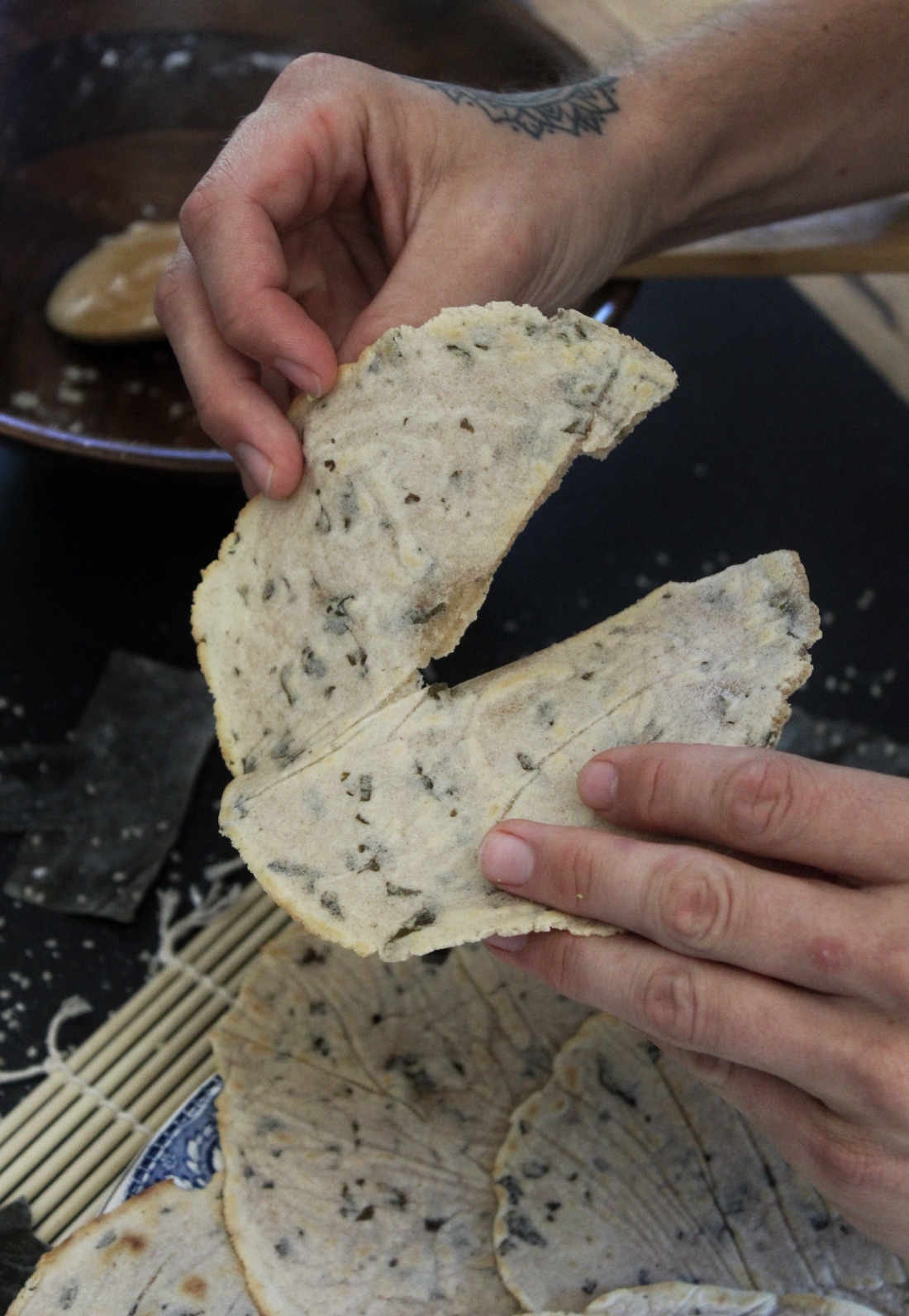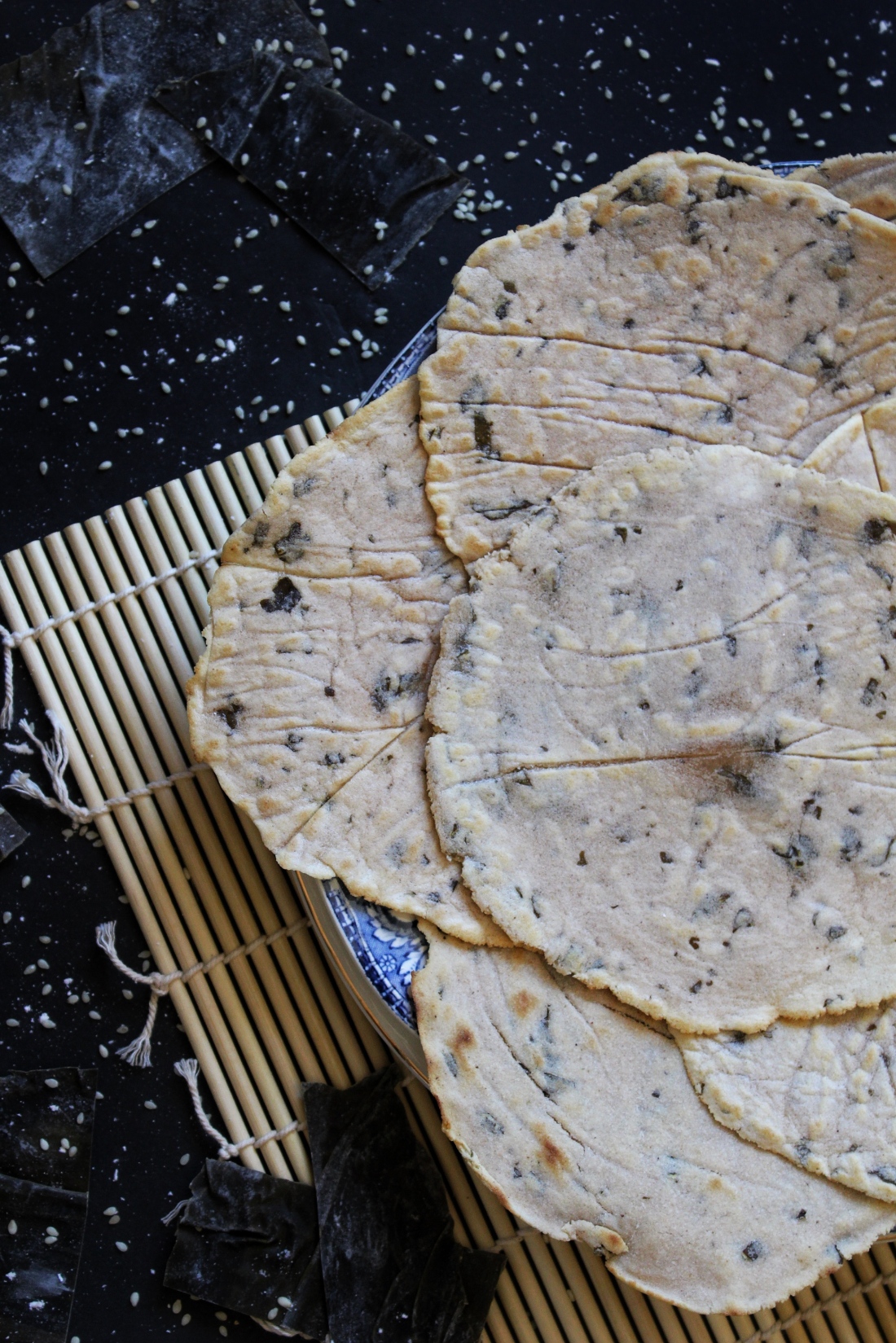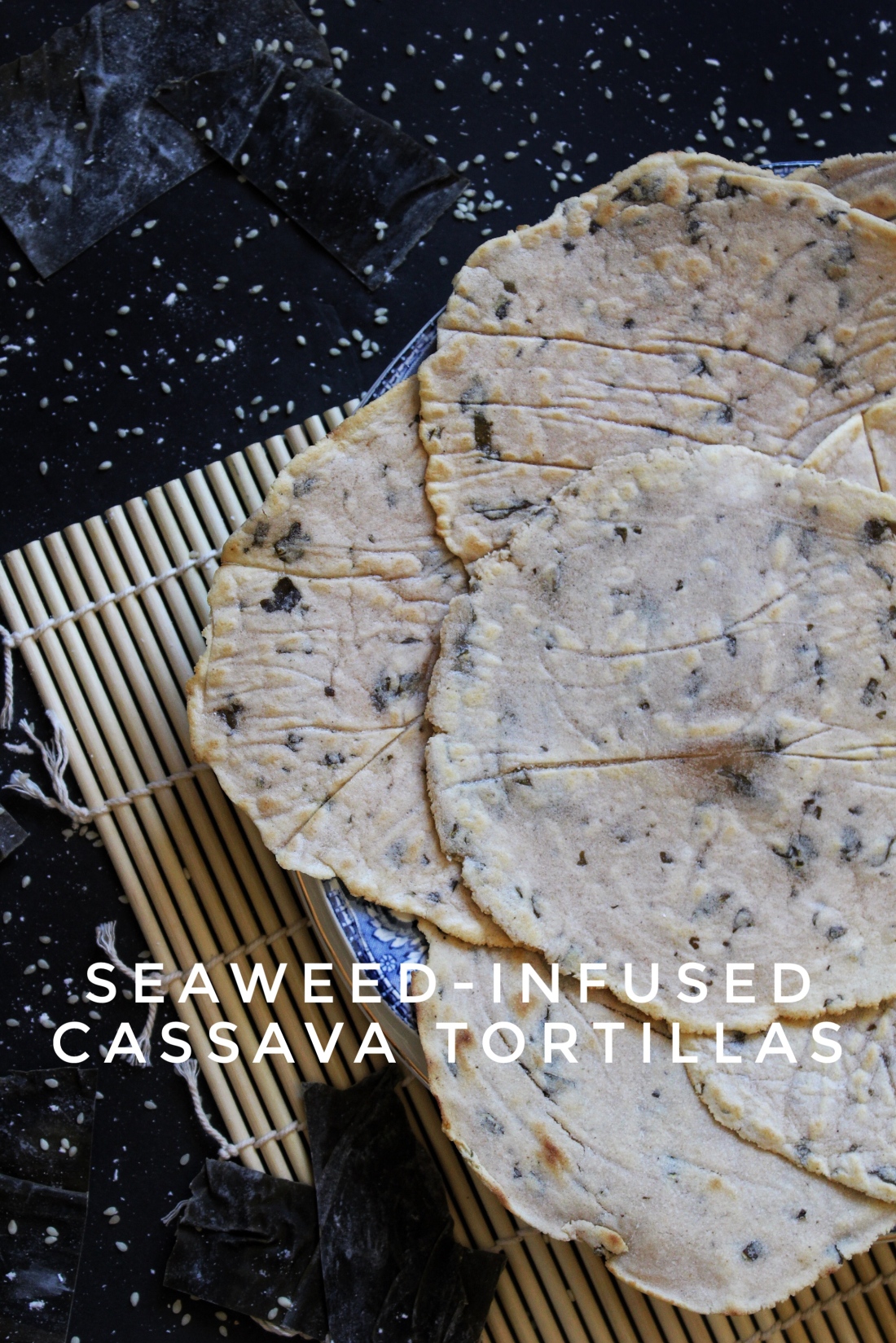Welcome to the start of the Chinese Tex Mex fusion dinner – we’re glad you’re able to make it!

What good is any tex-mex meal if there are no fresh tortillas? Tortillas are the base, the rock, the foundation from which the rest of a Tex-Mex meal is constructed around; even when all else fails, tortillas can still be eaten as breakfast, lunch, or dinner, which is why they’re the first recipe of the series.

Thanks to cassava flour, we’re still able to make delicious tortillas… wait, hol-up, what in the world is cassava flour?!
Okay, fair question. Cassava flour is the dried, finely ground product made from the yucca root, which is a staple food for millions of people who call the tropics their home. If you saw a whole yucca root, you’d probably have no idea that it’s even edible, because it closer resembles a baseball bat than it does a sweet potato. It’s from the same root that tapioca starch is made, albeit, tapioca starch and cassava flour are not interchangeable.




See, cassava flour is made by peeling, drying, and grinding up the entire root, whereas tapioca starch is created by washing the root vigorously, rinsing away the fiber, drying it, and finely grinding it. The result is a fine, powdery product that can used in place of corn starch, turned into boba, or used to thicken a gravy, but definitely not what you want to make tortillas out of.
Cassava flour is essentially a whole food – considering its minimal processing – which makes it suitable for paleo diets, plant-based, gluten-free diets, and lectin-limited diets. Better yet, the dough made out of cassava flour is easy to work with because it rolls out into a thin sheet without breaking, holds together during cooking, and can withstand a good bit of turmoil; its nature is drastically more durable than other gluten-free flour doughs. The final tortillas are tender, lightly brown, flexible, slightly chewy, and basically everything you could want in a tortilla.


An important element in oriental cooking is the flavor of the sea, often coming from fish sauce, shrimp paste, or seaweed, which gives oriental cooking a unique depth of flavor that can’t be replicated without something that comes from the ocean. That’s where kombu comes in. Kombu is a type of seaweed, commonly found in health stores and most Asian markets, which delivers the seafood taste missing in so much vegan cooking.
For added depth of flavor, unrefined sesame oil and full fat coconut milk are mixed in to lend a soft and pliable texture, which would be lacking if it weren’t for the addition of some fat.

Cooking these bad boys is likely far simpler than you’re imagining – you simply roll out the dough, cook for one minute per side over medium-high heat, and repeat! To ease stick-age, roll out your dough between two sheets of parchment paper. This will prevent your dough from sticking to your countertop when it comes time to transfer them to your pan.
Trust me, these tortillas are down right addicting, not to mention delectable to eat straight up. Plus, they keep well; simply place them in an airtight plastic bag or container and store on your countertop for two days or in the fridge for up to a week. To reheat, toss them in a pan over medium high for 15 seconds per side and you’re ready to enjoy tortillas that are 100% guilt-free.

To make bomb Chinese tacos, pair tortillas with refried black soy beans, cinnamon-orange jasmine rice, crunchy fennel citrus slaw, and brown garlic sauce tempeh & mushrooms.
Like what your taste buds are tellin’ ya? Leave behind a nice rating, share your thoughts with us in the comments, or show us your creations by tagging @noeggsorham on Instagram.
All the best,
Kim & Ryan

Seaweed Infused Cassava Tortillas
'A tortilla that tastes like sesame and seaweed? What has this world come to!?' - Dads
Ingredients
- 1 cup (128 g) cassava flour
- 1/2 tsp (2 g) salt
- 1/4 tsp (1 g) baking soda
- 1 sheet (7 g) of dried kombu
- 1/2 c water
- 1/4 c full-fat coconut milk
- 2 tbsp unrefined sesame oil
Directions
- In a large bowl, stir together cassava flour, salt, and baking soda. Set aside.
- Using your hands, tear apart kombu sheet into large pieces and add to a personal-sized blender or mini-food processor along with water, coconut milk, and sesame oil. Blitz for 5-10 seconds, or until the kombu is reduced to tiny, flake sized pieces.
- Using a wooden spoon, create a well in the middle of the dry ingredients, pour in wet ingredients, and stir until throughly combined. (The dough should be wet enough to stick together, but not so wet that it sticks to your hands or so dry that it crumbles apart. If the dough is crumbly, mix in a tablespoon of water at a time. If it’s too wet, mix in a tablespoon of cassava flour at a time.)
- Heat a 10-inch non-stick pan over medium heat high heat.
- In between two large sheets of parchment paper, roll out two tablespoon of dough at a time. Plop the dough down on the bottom sheet and place the other right on top. Then – using an empty glass, wine bottle, or rolling pin – roll from the middle of the dough out in all directions. Alternate the direction of your roll each time to ensure a round shape. Lighten up the pressure as you approach the edges of the tortilla to prevent cracking.
- Once your dough is rolled into a disk about 8 inches in diameter (larger or smaller depending on preferred thickness), carefully peel back the top layer of parchment paper. Then, by inverting the bottom paper, place tortilla in hand and peel back parchment.
- Transfer tortilla to pan and cook for one minute per side, or until lightly browned on and slightly crisp around the edges (they soften as they cool).
- Repeat steps 5-7 for the remaining dough. Layer tortillas one on top of the other, with a sheet of paper towel (or clean tea towel) in between each to wick away excess moisture.
- Store in an airtight container at room temperature for up two days or in the fridge for a week. Re-heat in a pan over medium-high heat for 15 seconds per side. Remember to save a couple for the rest of the Chinese Tex-Mex recipes!

6 thoughts on “ Seaweed-Infused Cassava Tortillas (Chinese Tex-Mex) ”